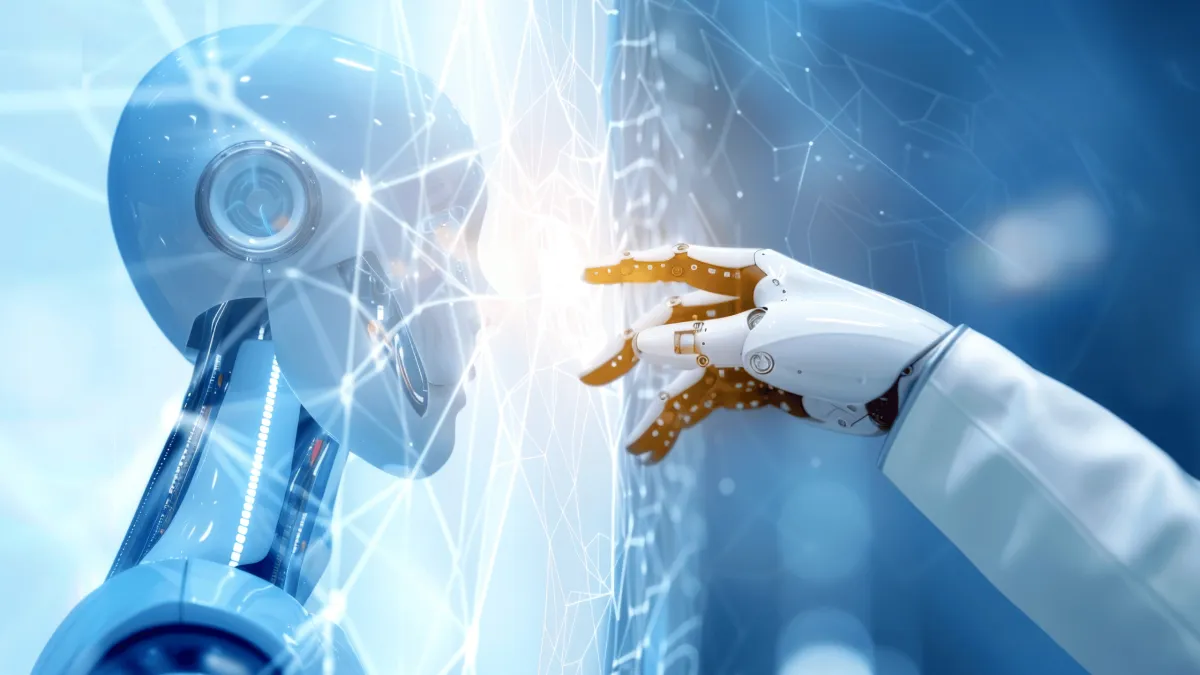
The Myth of the AI Job Killer: Why Automation Unlocks Human Potential
Few topics spark more debate than the future of work in the age of AI. Headlines warn of robots taking jobs, but the data tells a more nuanced story. 59.9 % of small businesses have no plans for AI-driven layoffs and 67 % say AI relieves pressure on themselves and their staff. Only 14 % believe AI could replace an employee, while nearly 42 % are open to the idea under the right conditions. In fact, AI adoption is associated with growth and opportunity: AI users are three times more likely to achieve double-digit growth and 86 % of AI-enabled SMBs report improved profitability. Rather than eliminating workers, automation is freeing people to focus on high-value tasks and unlocking human potential.

Why the fear persists
Public anxiety about AI often stems from high-profile stories of automation eliminating factory jobs or call-center positions. Yet in the home-service industry, most tasks require nuanced judgment, empathy and physical presence—skills that AI cannot replicate. The Bluevine survey shows that top uses for AI are marketing and data analysis, not replacing hands-on work. Where AI does reduce labor, it takes over repetitive administrative tasks like scheduling, invoicing and call routing so that staff can focus on customer relations.
Economic pressures also fuel fear. Owners face inflation and operational costs and may worry that AI adoption signals cost-cutting at the expense of jobs. However, cost savings often come from automating mundane tasks, not layoffs. 58 % of AI users save more than 20 hours per month time that employees can redirect to upselling, training and relationship building. Moreover, 66 % of AI users save between $500 and $2 000 monthly—money that can fund staff bonuses or further training.
How AI unlocks human potential
Reducing drudgery. Answering the same question 20 times a day or manually entering call notes can exhaust employees. AI chatbots and voice assistants handle basic inquiries, transcribe calls and send automatic reminders. This allows staff to spend more time on complex tasks like crafting bespoke quotes or addressing unique customer needs.
Enabling higher-value roles. When AI handles scheduling and payment collection, employees can transition into roles that require empathy and problem solving. For example, a receptionist redeployed as a field-service coordinator can proactively communicate with technicians, anticipate delays and ensure customers receive timely updates. This shift not only improves the customer experience but also creates new career pathways within the company.
Supporting decision-making. AI provides data-driven insights that help humans make better decisions. Predictive analytics can identify which neighborhoods respond best to promotions, while sentiment analysis reveals common pain points in customer feedback. Instead of replacing managers, AI becomes a trusted advisor.
Facilitating training and reskilling. AI can personalize learning plans for employees. Chatbots deliver micro-lessons, while predictive models highlight topics employees struggle with. This accelerates upskilling and prepares staff for evolving roles.
Real-world examples of AI augmenting humans
Content workflows. Sprinklr highlights that agentic AI systems can manage entire content workflows—generating drafts, editing for tone and compliance, scheduling posts and optimizing based on engagement. Content teams reclaim hours spent on manual edits and can focus on creative direction.
Customer service. In customer service, agentic AI can classify incoming cases, authenticate users and initiate backend actions like refunds or reorders. Human agents are freed from routine case triaging and can handle escalated or complex situations that require empathy.
Insurance operations. Agentic AI even extends to industries like insurance. It can review claim documentation, validate coverage, flag inconsistencies and initiate approvals or rejections, enabling adjusters to focus on nuanced cases where judgement is necessary.
Retail and e-commerce. AI systems can monitor sales velocity, compare it with demand forecasts and autonomously adjust stock orders or pricing. Humans can then concentrate on merchandising strategy and customer relationships rather than manual inventory adjustments.
Addressing concerns about employee replacement
To ensure automation benefits both business and workers:
Communicate transparently. Explain to your team what AI will handle and what remains in human hands. Show them how automation can eliminate tedious tasks so they can focus on meaningful work.
Invest in training. Provide employees with opportunities to learn new skills relevant to AI-enabled roles—customer relationship management, data interpretation, marketing strategy and problem solving.
Create new roles. As automation takes over administrative work, build new positions around customer experience, relationship management, quality assurance and AI oversight. Employees who understand the business can become AI trainers, ensuring models operate ethically and effectively.
Celebrate human skills. Empathy, creativity and critical thinking will remain invaluable. Recognize and reward employees who excel in these areas, reinforcing that AI is a tool, not a replacement.

Long-term career pathways with AI
Automation doesn’t diminish human importance—it reshapes it. As AI takes over administrative work, new roles emerge: AI trainers, data stewards, customer-experience coordinators and growth strategists. Employees previously tied up with manual scheduling can become brand ambassadors who manage online reputation and build community partnerships. Service technicians can evolve into consultative experts who recommend energy-efficient upgrades and smart-home technologies. Some workers will choose to specialize in AI tool implementation, carving out niche consulting businesses that help other small companies integrate automation. These pathways demonstrate that AI isn’t a job destroyer but a catalyst for personal development and entrepreneurship.

AI as a catalyst for entrepreneurship
AI’s ability to lower operational barriers creates opportunities for new ventures. Solo entrepreneurs can launch home-service businesses using AI to handle marketing, booking and invoicing, reducing the need for administrative staff. Established businesses can spin off niche offerings—such as subscription maintenance plans or specialized consulting—powered by AI insights. The pay-per-call networks described in Blog 7 represent another entrepreneurial avenue: by monetizing excess leads, owners can build a revenue stream that funds expansion. As adoption accelerates, those who leverage AI creatively will find themselves at the forefront of new markets.
The narrative that AI will destroy jobs ignores the reality on the ground. In home-service businesses, AI is freeing people from rote tasks, improving service and creating opportunities for growth. Data shows that the vast majority of small businesses are not planning AI-driven layoffs and that AI actually relieves pressure on teams. By embracing automation responsibly, you can unlock human potential and differentiate yourself in a competitive market. Curious about how voice assistants and agentic workflows can empower your team? Try Voice AI free for 30 days and experience the power of automation that complements your staff, not replaces them.
Employee satisfaction and retention
Many owners worry that AI adoption will demoralize employees, yet the opposite is often true. When AI handles repetitive tasks, workers experience less burnout and greater job satisfaction. Studies show that workers value autonomy and time to focus on meaningful interactions. By automating call notes, scheduling and payment processing, businesses free their teams to build relationships and develop new skills. In turn, employees are more likely to stay longer and advocate for your brand. This shift supports the finding that 67 % of business owners say AI reduces pressure on their staff. Happy employees also deliver better customer experiences, creating a virtuous cycle of retention and referrals.
Preparing your workforce for the AI era
To fully unlock human potential, businesses must invest in training and change management. Begin by communicating the purpose of AI initiatives and how they will make employees’ jobs easier. Provide training on how to use new tools—voice assistants, analytics dashboards, marketing automation—and create channels for feedback. Encourage staff to upskill in areas that AI can’t replicate easily, such as creative problem solving, empathy and complex negotiation. Offer cross-training so employees can move into customer success, sales or operational roles. Finally, consider appointing an “AI champion” within your company: a team member who becomes an expert in using and optimizing AI tools, shares best practices and ensures that human and machine workflows stay aligned. By actively preparing your workforce, you ensure that automation is seen as an enabler, not a threat.
